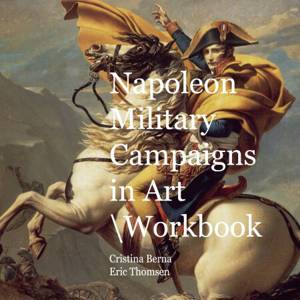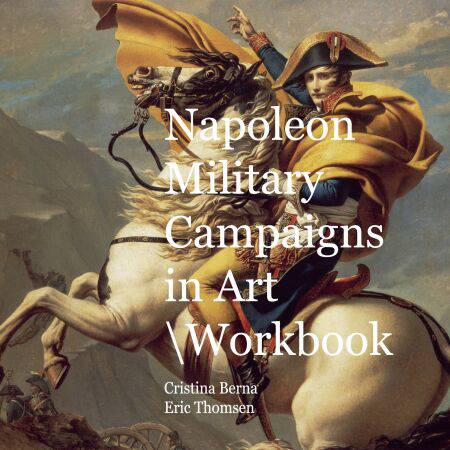
- Afhalen na 1 uur in een winkel met voorraad
- Gratis thuislevering in België vanaf € 30
- Ruim aanbod met 7 miljoen producten
- Afhalen na 1 uur in een winkel met voorraad
- Gratis thuislevering in België vanaf € 30
- Ruim aanbod met 7 miljoen producten
Zoeken
€ 19,99
+ 19 punten
Omschrijving
This workbook invites readers to do their own short art analysis, historical analysis and write it down as notes on the blank pages next to the artwork. It can also be used in a group or classroom setting.
The workbook can be great fun when used for training in the English language - in classroom discussion.
You can add your answers or add your own questions in the blank space.
Napoleon Bonaparte (1769-1821) continues to fascinate even today, more than 200 years after his death. His legacy is shown in beautiful paintings.
He was an unrivalled general, although he did make occasional mistakes both on the tactical and the strategic level -the most significant was his attack on Russia, which annihilated most of his Grande Armée and led to his downfall.
Napoleon institutionalized plunder and destruction in a way mostly only known by more primitive invaders. Both he and his generals and soldiers stole incredible amounts of cultural property and wantonly destroyed much more
Napoleon did leave some durable institutions on which modern France is built up, including the Napoleonic Code, the judicial system, the central bank and the country's financial organization, military academies, and a centralized university.
We hope the readers will enjoy our selection and the activity. We hope it will contribute to a better understanding of Napoleon, his time and of art itself.
The workbook can be great fun when used for training in the English language - in classroom discussion.
You can add your answers or add your own questions in the blank space.
Napoleon Bonaparte (1769-1821) continues to fascinate even today, more than 200 years after his death. His legacy is shown in beautiful paintings.
He was an unrivalled general, although he did make occasional mistakes both on the tactical and the strategic level -the most significant was his attack on Russia, which annihilated most of his Grande Armée and led to his downfall.
Napoleon institutionalized plunder and destruction in a way mostly only known by more primitive invaders. Both he and his generals and soldiers stole incredible amounts of cultural property and wantonly destroyed much more
Napoleon did leave some durable institutions on which modern France is built up, including the Napoleonic Code, the judicial system, the central bank and the country's financial organization, military academies, and a centralized university.
We hope the readers will enjoy our selection and the activity. We hope it will contribute to a better understanding of Napoleon, his time and of art itself.
Specificaties
Betrokkenen
- Auteur(s):
- Uitgeverij:
Inhoud
- Aantal bladzijden:
- 134
- Taal:
- Engels
Eigenschappen
- Productcode (EAN):
- 9788411238564
- Verschijningsdatum:
- 16/09/2024
- Uitvoering:
- E-book
- Beveiligd met:
- Digital watermarking
- Formaat:
- ePub

Alleen bij Standaard Boekhandel
+ 19 punten op je klantenkaart van Standaard Boekhandel
Beoordelingen
We publiceren alleen reviews die voldoen aan de voorwaarden voor reviews. Bekijk onze voorwaarden voor reviews.











